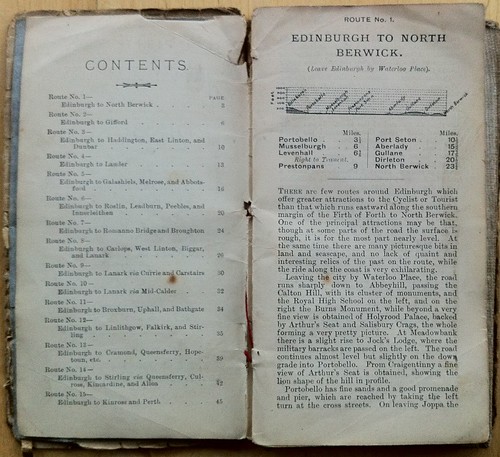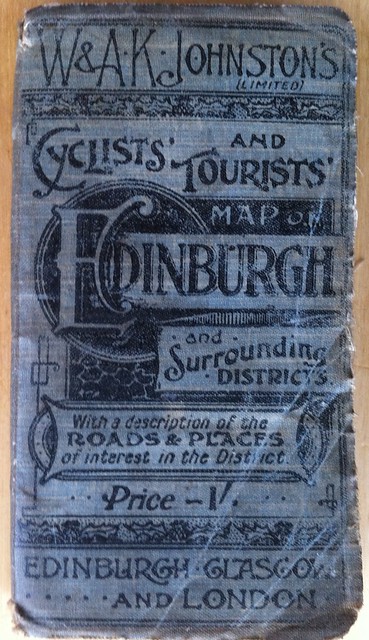I have a small collection of books and maps about Edinburgh. This is the latest addition.
Routes and destinations will be familiar!

"Of late years the run to Gifford has become very popular partly because it is a fine route off the beaten track, but more especially because of the improved catering accommodation now provided in the village for Cyclists and Tourists."
"Few routes from Edinburgh make a better cycling trip than the road over the Lammermuirs to Lauder. It is rather hilly both going and returning, but it has also many compensatory runs down hill, which delight the Cyclist and give a zest to hill climbing."
"Ever since the dawn of cycling this has been a favourite route with Edinburgh votaries of the wheel. The time was when on the Spring Holiday almost every cyclist who could face the somewhat hilly road and the distance to Peebles and back went to Peebles that day."
"The surface deteriorates as the road proceeds onwards, till it merges into a rough track, rising and falling over the moor by Harper Reservoir. There is little to be seen on the road. It is very lonely, and cyclists should not fail to carry a pump and repairing outfit, as in case of puncture there is little if any chance of assistance till Carnwarth or Carstairs is reached."
"This is one of the most interesting routes from Edinburgh, and has always been a favourite road with Wheelmen."
"In olden times Culross was an important town; the ring of the anvil was heard throughout the whole district, and the hammermen of the burgh made girdles for all the housewives of Scotland."
"This is a favourite holiday run, though the Edinburgh cyclist seldom invades Fife on any other occasion. The Firth of Forth proves a serious barrier, and practically shuts off many a pleasant run."




 posts
posts
